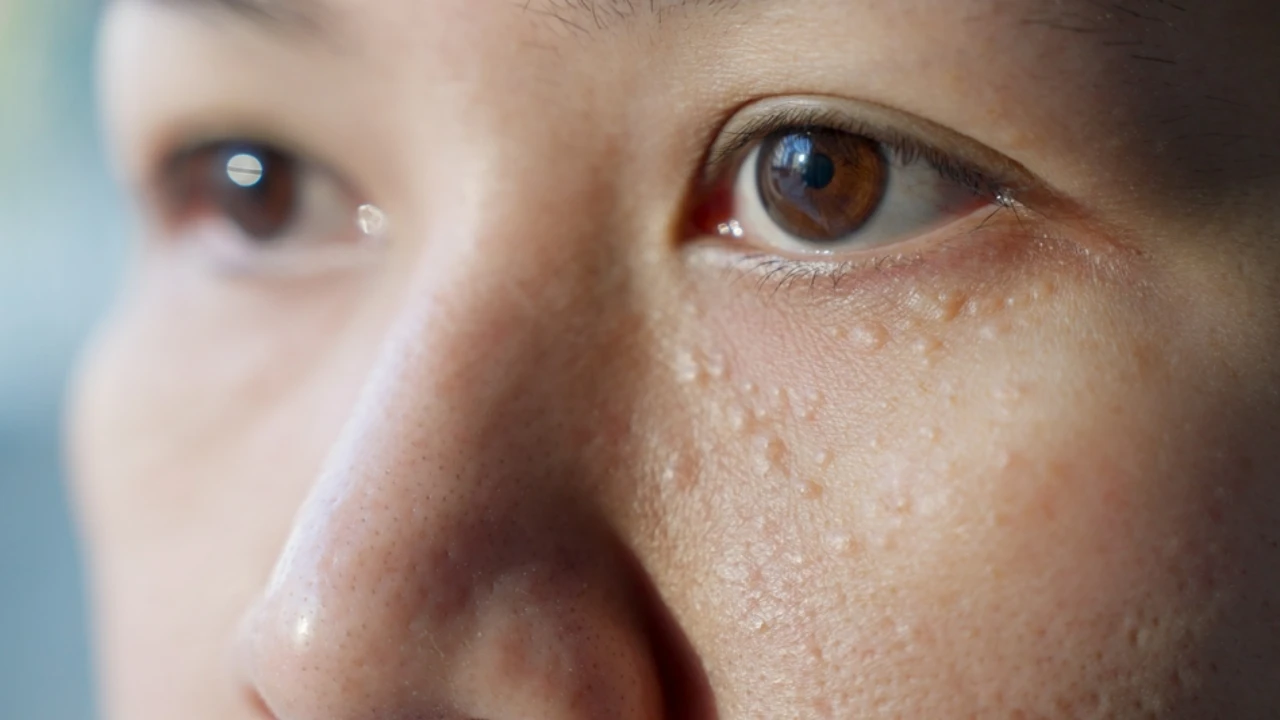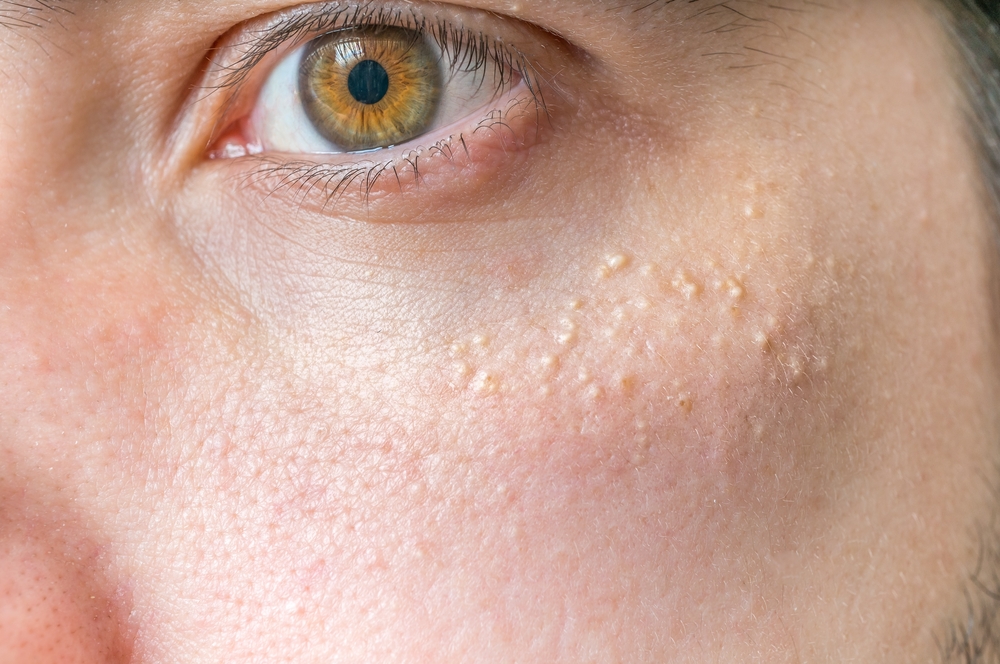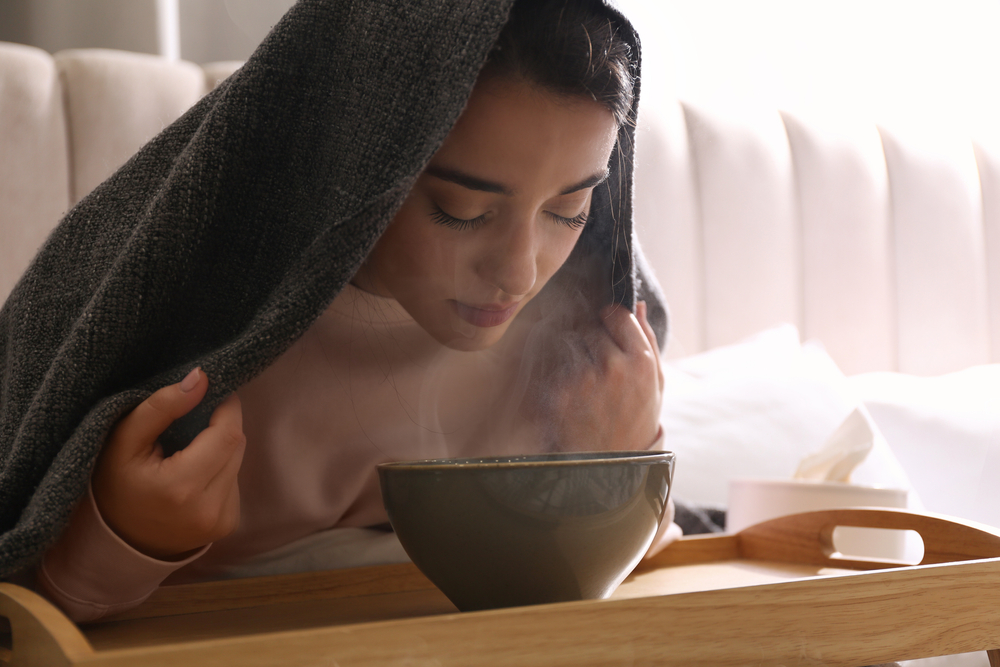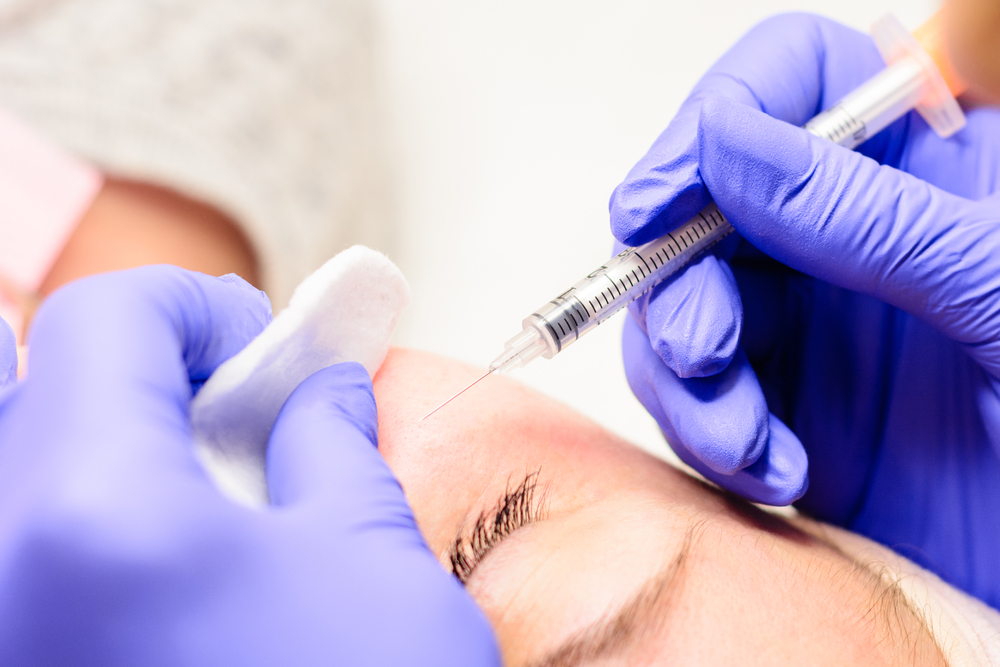A Complete Guide on How to Get Rid of Milia Under Eyes
Milia are tiny keratin-formed bumps under the eyes. Discover how honey and other remedies may help you on your quest on how to get rid of milia under the eyes.

Milia are tiny white bumps that often appear under the eyes and may look pretty bothersome. While they are harmless, many people seek tips on how to get rid of milia under eyes. If you prefer natural methods over medical interventions, several helpful home remedies can help you tackle milia under the eyes. This may range from using honey to Alpha Hydroxy Acid (AHA) products that help gently remove dead skin.
If you are not so sure about home remedies, there are ways healthcare experts can help you get rid of milia around your eyes; manual extraction and chemical peels are a few medical treatments.
In this article, we will explore various natural approaches to dealing with milia, providing you with safe and accessible options for addressing this common skin concern. These remedies utilize simple ingredients that are easily obtainable. Just like that, there are also ways to avoid milia around eyes by following some basic rules. Read on to know more.
What Is Milia?
The small white bumps under the eye that may typically appear anywhere on the face, like the nose or the cheeks, are known as milia. These often look like tiny cysts or whiteheads, but they are not caused by clogged pores or oil glands like traditional acne. These are small keratin-filled cysts that form when dead skin cells become trapped beneath the skin's surface. Milia are commonly found in newborns and infants, often referred to as "baby acne," but can also occur in people of all ages (1). Milia is believed to be associated with dead skin cells, skin damage, or the use of certain skincare products and is non-contagious. Our contributor, Ollie Wertheim, Founder and Chief Formulator, SENSITIVE SKIN LLC., shares important details to identify Milia, saying, “Milia is characterized by small white or yellow bumps on the skin, is not contagious and typically resolves on its own. Avoid squeezing them, as it can cause irritation and scarring.”
While milia are generally harmless and painless, some individuals may find them cosmetically unappealing. They are usually diagnosed based on their distinctive appearance. In most cases, no treatment is required, and milia will resolve on their own over time. However, if desired, a dermatologist can remove milia using various methods, such as extraction, chemical peels, or microdermabrasion (1).
What Causes Milia Under Eyes

The exact cause of Milia has yet to be understood. However, there are several factors that may cause milia under the eyes, as per the research. While milia can occur anywhere on the body, they are often found under the eyes due to the thinner and more delicate skin in that area.
One of the primary causes is the buildup of keratin, a protein found in the outer layer of the skin. When keratin becomes trapped beneath the skin's surface, it can form small cysts, resulting in milia (2).
Another common cause of milia is the use of heavy skincare products, such as rich creams or oils, around the eye area. These products can clog the pores and prevent the natural shedding of dead skin cells, leading to the formation of milia. Similarly, using cosmetics that make your skin greasy or not properly removing makeup can contribute to the development of milia (1).
In some cases, milia can be associated with certain skin conditions or underlying medical conditions. For example, individuals with a history of skin damage, such as burns or sun damage, may be more susceptible to developing milia. Additionally, certain genetic disorders or skin diseases, such as porphyria or epidermolysis bullosa, can be linked to the formation of milia (3).
Home Remedies to Get Rid of Milia Under Eyes
Firstly, popping is not an option, this will only irritate the skin and may cause permanent damage by leaving behind a deep scar. However, there are other approved methods that may help you get relief from milia under the eyes.
1. Gentle Exfoliation
Using a mild exfoliating product or a soft washcloth, gently cleanse the area around the milia to remove dead skin cells. This can help promote the shedding of milia over time. However, be cautious and avoid applying excessive pressure or scrubbing vigorously, as this can irritate your skin.
2. Warm Compress Or Steam

Applying warm compresses or exposing the area to steam may help soften the skin and open up the pores. This may aid in the natural expulsion of milia. Apply a soaked, warm cloth to the under-eye milia and hold it for a few minutes. Repeat this a few times a day.
3. Honey
Honey is known for its moisturizing and antibacterial properties. Applying a small amount of raw honey directly to the milia and leaving it on for about 10–15 minutes before rinsing off with warm water may help (4). But first, please ensure that you are not allergic to honey and perform a patch test before applying it to a larger area
According to Dr. Aseem Sharma, Chief Dermatologist at Skin Saga Centre for Dermatology, Mumbai, “Theoretically, honey contains antioxidants and humectant properties that may contribute to combating milia by maintaining skin moisture and preventing dryness, but that would be a clinical overreach. There are other proven methods to remove and prevent milia, as discussed in the article.”
4. Retinol Or Alpha Hydroxy Acid (AHA) Products
Over-the-counter creams or serums containing retinol or AHAs, such as glycolic acid or lactic acid, may help promote skin cell turnover and exfoliation. These ingredients can help reduce the appearance of milia over time. However, exercise caution and follow the instructions on the product, as they can irritate the delicate eye area (5).
It is important to remember that milia may not disappear immediately and can take time to resolve. If your milia persist, become irritating, or increase in number, it is advisable to seek professional advice from a dermatologist or skin care specialist. They can provide a proper diagnosis and recommend suitable treatment options for your specific situation.
Medical Treatment to Get Rid of Milia Under Eyes
So, if home remedies do not effectively resolve milia under the eyes or if you prefer a more immediate and professional approach, there are medical treatments that can help remove or reduce the appearance of milia performed by professionals.
1. Extraction

A dermatologist can perform a procedure called extraction, where they use a sterile needle or blade to puncture the skin and carefully remove the milia (1).
2. Curettage
This is a medical procedure that involves the doctor numbing the area to remove milia (6).
3. Cryotherapy
Cryotherapy involves the use of extremely cold temperatures to freeze and destroy the milia. Liquid nitrogen or another freezing agent is applied to the milia using a cotton swab or cryoprobe. The freezing causes the milia to blister and eventually fall off (7).
4. Diathermy
Diathermy is a procedure that uses heat to destroy the milia. A tiny electrical current is applied to the milia using a fine needle, which helps break down the cyst and promote healing.
5. Laser Ablation
Laser treatment can be used to target and destroy milia. A focused laser beam is used to vaporize the milia, and the surrounding skin remains unaffected.
Note: A trained professional should only perform these procedures to avoid infection or scarring.
How to Prevent Milia Under Eyes
Preventing milia under the eyes requires implementing a consistent skincare routine and making specific lifestyle choices. While it may not be possible to completely eliminate the risk of milia, following some particular routines can significantly reduce the likelihood of their formation.
To help prevent milia, our contributor, Ollie Wertheim, says, “Use a gentle, non-comedogenic cleanser suitable for your skin type. Look for products labeled as non-comedogenic and avoid heavy or oily products that could contribute to clogged pores.”
One crucial step is to adopt a gentle cleansing routine by using a mild, non-comedogenic cleanser. Avoid harsh scrubbing or using abrasive products around the delicate eye area, as this can potentially irritate the skin and lead to the formation of milia.
Using heavy creams, petroleum-infused, or thick oil-containing products may clog pores. Look for oil-free or water-based moisturizers, creams, and cosmetics. It is crucial to avoid using heavy creams or greasy cosmetics around the eye area, as they can contribute to the development of milia.
Incorporating gentle exfoliation into your skincare routine is also important. This helps remove dead skin cells and prevent their accumulation (8). Use a mild exfoliating product or a soft washcloth, and be cautious around the delicate skin under the eyes. Over-exfoliating should be avoided, as it can cause skin irritation and damage.
Leaving makeup on overnight can clog the pores and hinder the natural shedding of skin cells, potentially leading to the formation of milia. Use a gentle makeup remover or cleansing oil specifically formulated for the eye area to remove makeup at night.
Apply sunscreen with a minimum SPF of 30 to shield your skin from harmful UV radiation. This can help prevent sun damage and reduce the risk of developing milia. Additionally, wearing sunglasses that provide adequate UV protection can help safeguard the delicate under-eye area (9).
Dr. Aseem Sharma further says, “The occurrence of milia can be diminished through the safeguarding of your skin from the sun's rays. Seek a sunscreen that maintains a lightweight texture and avoids pore blockage. Mineral-based sunscreens, particularly those containing zinc oxide, offer optimal protection against sun exposure, thus assuming a critical role in thwarting the sun-induced skin damage that can trigger milia formation. Additionally, ensure the meticulous application of sunscreen with a minimum SPF of 30 onto your skin at least 30 minutes before stepping outdoors.”
Lastly, take measures to stay cool and keep your skin hydrated, especially during hot and humid weather conditions. This can help minimize the occurrence of milia.
Avoid picking, squeezing, or over-scrubbing the milia under the eyes. These actions can cause skin damage, inflammation, and potential scarring. It is best to leave milia removal to a dermatologist or skin care professional who can safely extract them.
Conclusion
Milia are tiny, acne-looking cysts that usually appear on the face. These are just cosmetic problems and usually do not relate to anything serious. However, the quest to discover how to get rid of milia under eyes naturally leads us to explore effective home remedies.
By adopting a proper skincare routine and incorporating gentle exfoliation techniques, such as steam and warm compresses, individuals can proactively address under-eye milia. The application of honey or non-comedogenic products can further aid in reducing their appearance.
It is important to note that results may vary, and seeking guidance from a dermatologist or skin care professional on how to get rid of milia under eyes is advisable. With consistent care and patience, one can work towards achieving a smoother and healthier under-eye area, successfully tackling milia in a natural manner.
It is equally important to stay cautious and not pop milia, as this could lead to permanent scarring on the skin.
Contributor: Ollie Wertheim, Founder and Chief Formulator, Senstive Skin LLC.
Sources:
1. Milia - StatPearls - NCBI Bookshelf
https://www.ncbi.nlm.nih.gov/books/NBK560481/
2. Milia may originate from the outermost layers of the hair bulge of the outer root sheath: A case report
https://www.ncbi.nlm.nih.gov/pmc/articles/PMC5228532/
3. Porphyria cutanea tarda presenting as milia and blisters - PMC
https://www.ncbi.nlm.nih.gov/pmc/articles/PMC5962394/
4. Therapeutic Manuka Honey: No Longer So Alternative - PMC
https://www.ncbi.nlm.nih.gov/pmc/articles/PMC4837971/
5. Salicylic acid as a peeling agent: a comprehensive review - PMC
https://www.ncbi.nlm.nih.gov/pmc/articles/PMC4554394/
6. Multiple milia formation in blistering diseases
https://www.sciencedirect.com/science/article/pii/S2352647520300708
7. Milia en Plaque
https://link.springer.com/chapter/10.1007/978-1-4471-6765-5_98
8. Use of organic acids in acne and skin discolorations therapy
https://pubmed.ncbi.nlm.nih.gov/25811473/
9. Effect of Sunscreen Application Under Maximal Use Conditions on Plasma Concentration of Sunscreen Active Ingredients - PMC





 JOIN OUR WHATSAPP CHANNEL
JOIN OUR WHATSAPP CHANNEL









































